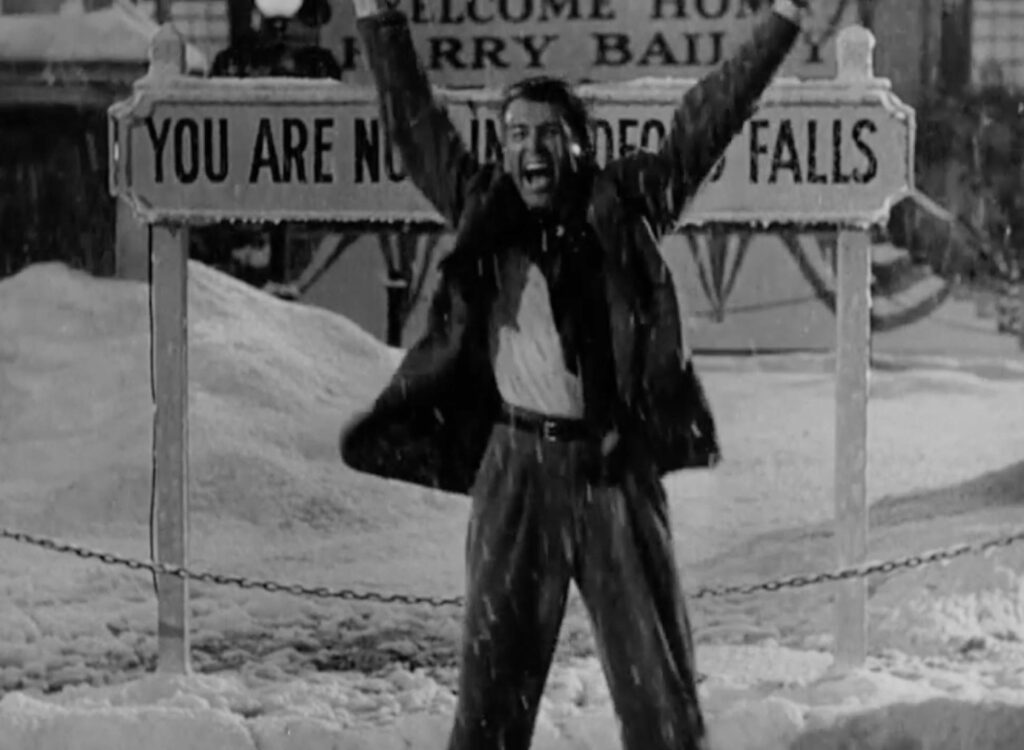Mastering the Customer Conversation
Ok, here it comes. If you go to the movies or turn on your TV, you know that it is holiday movie time. Potential blockbusters are hitting the theaters, and classic holiday movies seem to be on every channel. At a recent operations meeting within our office, we were discussing great classic holiday movies and a number of them quickly hit the list. The usual suspects came to the forefront; A Christmas Story, Planes, Trains, and Automobiles, Love Actually, Polar Express, National Lampoons Christmas Vacation, Home Alone, Miracle on 34th Street, and Elf. To my shock and amazement, the classic movie It’s a Wonderful Life didn’t come up until I referenced it. In fact, a colleague of mine who is a movie buff then says something shocking…”I have never seen it!” Based on that, I went to the internet to see where this classic movie ranks.
According to goodhousekeeping.com, of the 55+ Best Christmas Movies of All Time, It’s a Wonderful Life ranked #7 out of 57! The caption reads, “This 1946 Frank Capra film isn’t just one of the best Christmas movies of all time – it’s one of the best movies in general. It’s a Wonderful Life was nominated for six Academy Awards and ranks #11 on the American Film Institute’s original list of the 100 Greatest American Films of All Time.” (Matthews, 2019) Based on that, this movie is not only relevant to the season, but it is a focal point in this blog – who is the hero in your customer conversations?
It always fascinates me how classics become classics. Did you know that…
1. it was originally a 21-page Christmas card before the movie rights were purchased?
2. Cary Grant was set to star in the film instead of Jimmy Stewart?
3. the movie wasn’t originally a blockbuster?
4. it was actually filmed in the summer?
It has become a classic, so let me set the context of this movie with two key actors in the story.
In the story you have the Protagonist George Bailey (played by Jimmy Stewart) and Clarence Odbody (played by Henry Travers), who serves as the sage or coach that is sent to help George. If we take this analogy a step further, George is the customer who has a problem and Clarence is sent to help him solve it.
George lived in Bedford Falls, NY, with his wife Mary and their children. George was the loyal, committed, longtime manager of their small town building and loan company that provided loans to working people so they can buy homes. During troubled times, George knew he couldn’t kick people out of their houses and he wasn’t willing to foreclose on their properties even though he had pressure to do so. (Much like your customer, he had bosses to answer to and goals to meet.)
Then on Christmas Eve, facing the tension between hurting the townspeople he loved to serve and financial ruin and disgrace, we find him contemplating suicide by jumping off the local bridge. We are then introduced to the stories sage, Clarence.
Clarence is an AS2 (Angels Second Class), who after 200 years, has yet to get his wings. To prepare for the assignment, Clarence watches a few scenes from George’s life which shows him all he needs to know about the selfless acts George has done for the people of Bedford. Here is where the lightbulb went off for me.
Our CEO, Jeff Bloomfield, and I were having a conversation last week about how so many sales people often fall into the trap of trying to make ourselves and/or our product the “hero” in the story. When in reality, we need to make our customers the hero of the story.
If you are familiar with the Neuroselling concepts at Braintrust, this will sound familiar. You, as the sage for your customer, have the opportunity every day to make your customer the hero of the story. Are you doing that, or are you making yourself and/or your product the hero?
Now back to our movie: To the untrained storytelling eye, It would be so easy to say Clarence is the hero in the story.
1. Clarence comes to earth,
2. Gives George a solution,
3. George makes a decision to change (buying decision),
4. Clarence gets his wings (reward),
5. Everyone lives happily ever after.
Now think about your last customer conversation… Who is the hero in your story? More often than not, it looks like this: You make a sales call, and you find out your customer’s problem. You, as the shining knight on a white horse give your customer a solution to said problem, your customer makes a buying decision, you hope they laud you with praise for saving the day for them, you get a commission or a trip to Hawaii (let’s go big), and everyone lives happily ever after. In this all too familiar sales “story” the characters are in the wrong costumes.
What if we looked at it this way:
1. Clarence (you) is the sage,
2. The sage brings a solution to solve George’s (your customer) problem,
3. George((your customer) makes a buying decision,
4. George (your customer) uses your sage solution to solve the problem and becomes the real hero of the story inside the company.
5. George (your customer) now trusts Clarence (you) even more and goes to you (buys more) time and time again.
If you do this, George (your customer) wins, Clarence (you) still gets his wings, and yes, you get your commission or trip to Hawaii!
In the final scene, Clarence gives George a book with a note in it. The note read the following – “Remember no man is a failure who has friends. Thanks for the Wings!” – Love, Clarence.
The bell rings and George’s daughter says, “the teacher says, every time a bell rings, an angel gets his wings.” When your customer becomes the hero of your conversation, the bell still rings for you. As professional communicators, this is so important for us to understand. Now – go watch the movie! (And use this lesson to change your next customer conversation!)
Source: Goodhousekeeping.com, November 26, 2019
https://www.goodhousekeeping.com/holidays/christmas-ideas/g1315/best-christmas-movies/?slide=7
Coaches Corner – Mastering the Coaching Conversation
Coaches, do you make your team members the hero of the story? I recently heard a speaker say the following, “we must lower ourselves in order to lift others up.” As you read the blog this week, I want us to challenge ourselves as coaches regarding our conversations to see if we are lifting up ourselves as we coach or are we lifting up others? Are we solving problems so we are the hero, or so that our team members are the hero? The concepts from above apply to our daily conversations with our team members.
It is a mindset to realize that we are the sage/coach and that we must help identify the roadblocks that stand in the way of our people so that when we can offer or co-create solutions. These solutions are then centered in a place that is driven by helping our players be the hero of the story. This is so difficult to do in practice but it is something we must practice with vigilance if we want to win for the long-haul.
Your challenge for today is to think about being the coach that guides your team member, so they become the hero of the story.





